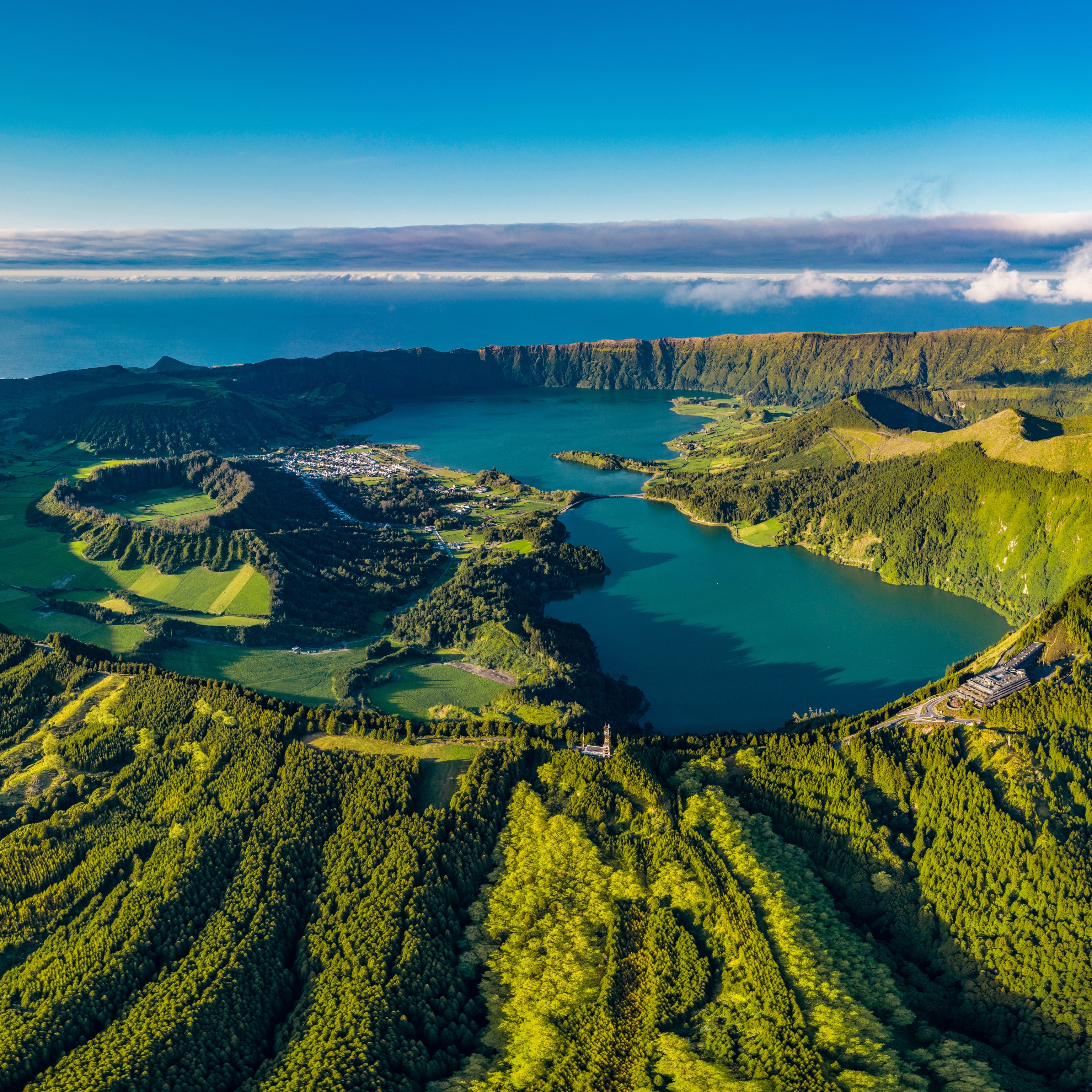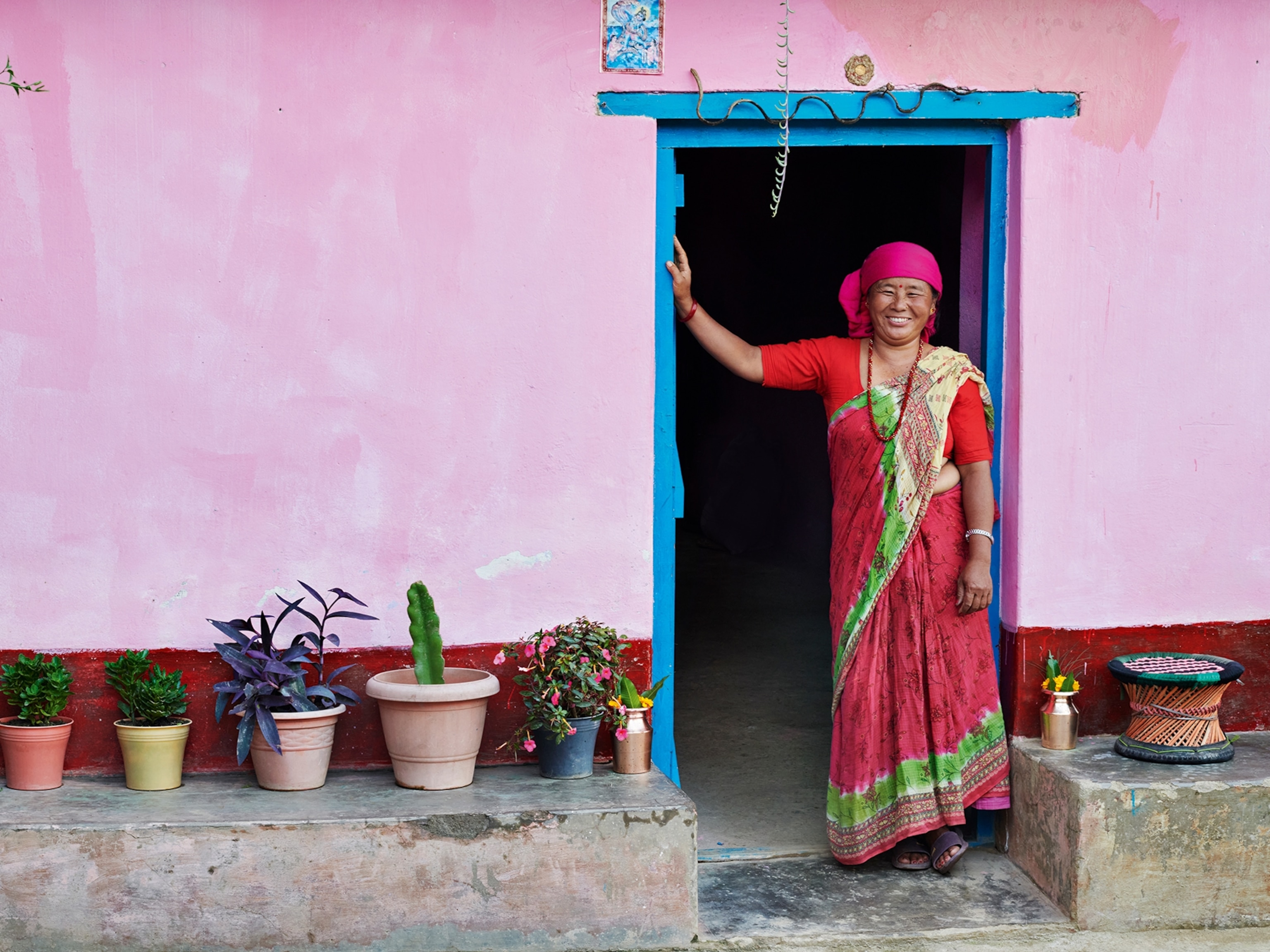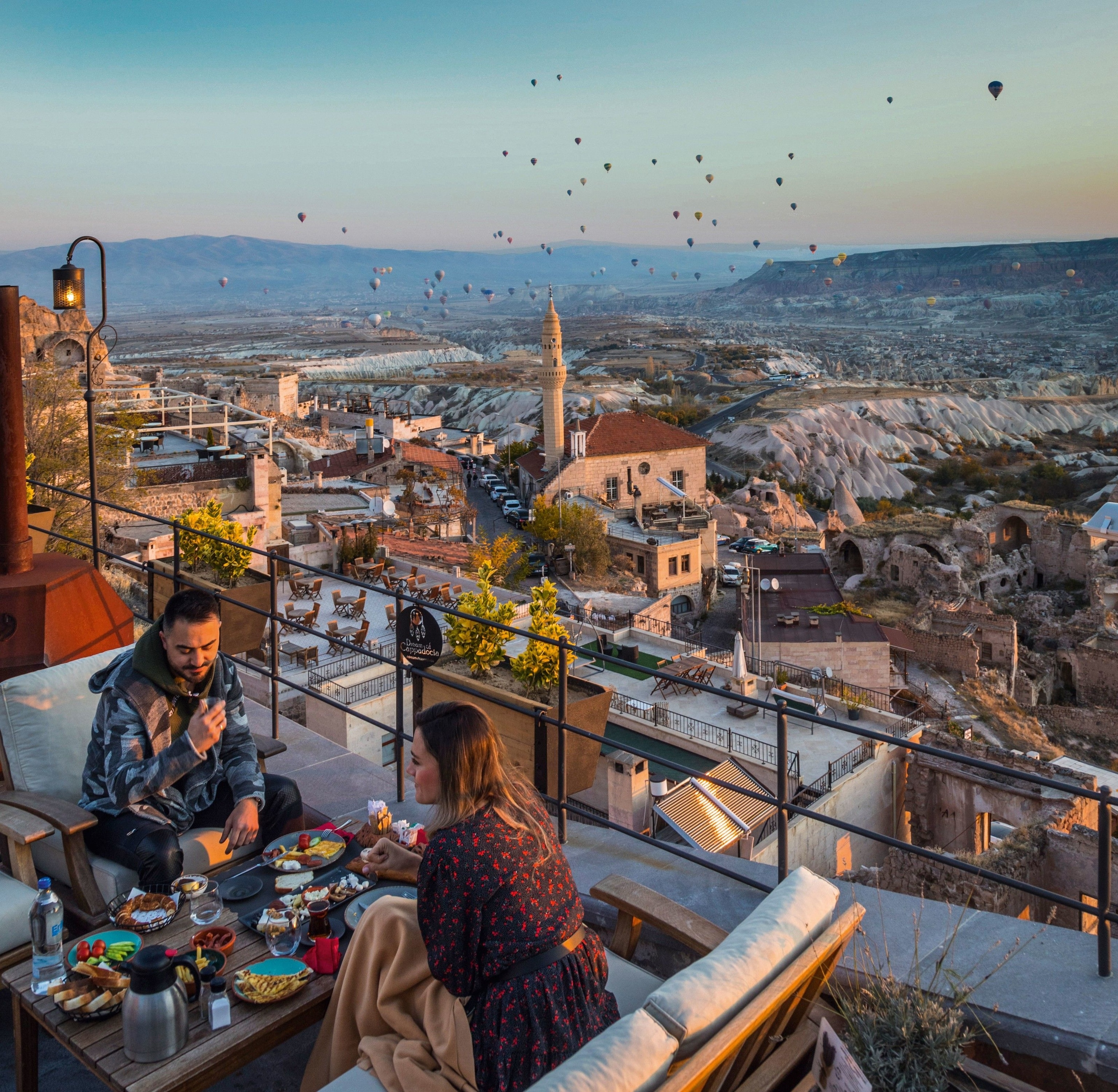
How to spend a weekend in Cappadocia, Turkey
A landscape of cave churches, ancient sites and hot air balloon-filled skies, the central Turkish region of Cappadocia is best explored via a wealth of hiking routes and adventure activities.
There’s something in the air in Cappadocia. Some say it’s the winged spirits — ‘peri’, in Turkish — that reputedly inhabit the region’s famous, phallic geological marvels, ‘fairy chimneys’. In the recent past, it was pigeons, lured to roost in hollows bored in the soft rock by farmers who gathered the droppings for fertiliser. Today, though, it’s mostly tourists floating high above this unique landscape, in colourful balloons that lift off in their dozens each dawn.
But despite that aerial overview being all many visitors see, Cappadocia’s reputation isn’t based merely on hot air. Occupied for millennia by peoples who hacked homes, churches, wineries and mills out of the volcanic tuff, it’s a land rich in history and humanity. The Hittites first made their mark 3,500 years ago, then the Greeks, Romans, Seljuks and Ottomans. The rock towns and cities they left behind beg to be explored.
For centuries, Cappadocia was a haven of peace, welcoming myriad incomers and their cultures, although Turkey’s political tumult of 2016 saw visitor numbers thin. Today, they’re returning, and with visa-free visits since March and frequent flights from the UK via Istanbul, this captivating region is once again set to resume its place in the spotlight.
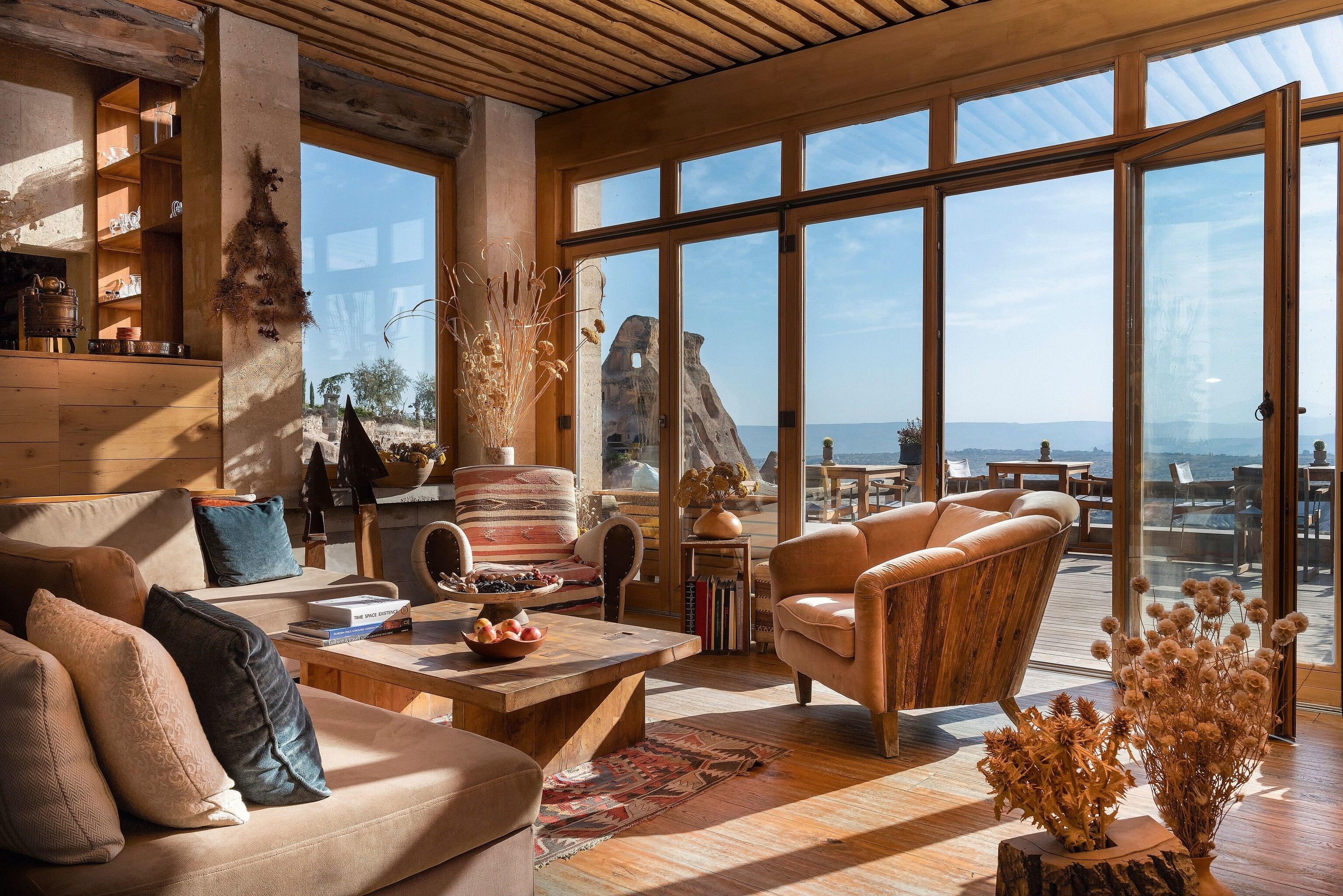
Day one: caves and castles
Morning
Climb to the highest point in central Cappadocia: Uçhisar Castle, a 200ft-high turret of golden volcanic rock, sculpted by the elements and, later, by humans, the earliest of whom are believed to be the Hittites from the second millennium BC. The ascent winds through tunnels and caves used as havens during attacks; spot livestock mangers and tandırlar (pit ovens) scooped from walls and floors. The summit affords great vistas, particularly east across Uçhisar village’s old quarter, past another castle-crag (the word ‘uçhisar’ means ‘three fortresses’) to take in the outline of Erciyes, one of three volcanoes whose eruptions 30 million years ago laid the foundations of this dramatic landscape. Stroll down to the Peri Cafe Cave Man, housed in a ‘fairy chimney’, for çay (tea), roasted pumpkin seeds and more dramatic views of the castle across the wildflower-spangled hillside.
Afternoon
Fuel up at Kadineli, a restaurant serving traditional Anatolian dishes prepared by village women in a renovated stone schoolhouse: try lahana sarmasi (stuffed cabbages), yaprak sarna (vine-leaf wraps), mantı (Turkish ravioli) and erişte (pasta ribbons) dusted with herbs. Walking is the best way to explore central Cappadocia, and you’ll burn off the calories on the hike down Güllüdere Vadisi (‘rose valley’), past dwarf almond and apricot trees, vines and poplars between blushing, folded rock walls. Keep eyes peeled for cave churches and pigeon houses, their diminutive doorways surrounded by gleaming plaster daubed with ‘lucky’ symbols — camels, palm trees, wheels — designed to attract birds. The trail leads to Çavuşin, where another hour’s walk, among the speartip-like outcrops of Kılıclar Vadisi (‘swords valley’), takes you to the bright lights of Göreme town.
Evening
For an insight into subterranean life — the norm for villagers here until at least the 18th century — return to Uçhisar to explore the underground areas of Argos in Cappadocia on the free tour (17.00 daily). This extraordinary hotel in the settlement’s old quarter has preserved the long-abandoned chambers unearthed during construction. Discover a spacious church, dating from the fifth or sixth century, later used as a caravanserai (roadside inn); an expansive kitchen, with hollows dug as berths for tandırlar ovens; a two-mile-long aqueduct; and a linseed atelier that once produced the oil for lamps that long ago lit these underground dwellings. Afterwards, repair to Seki restaurant to drink in both the views and the spicy local syrah. Don’t miss Cappadocia’s signature testi kebab — meat, vegetables and herbs simmered in a clay pot.
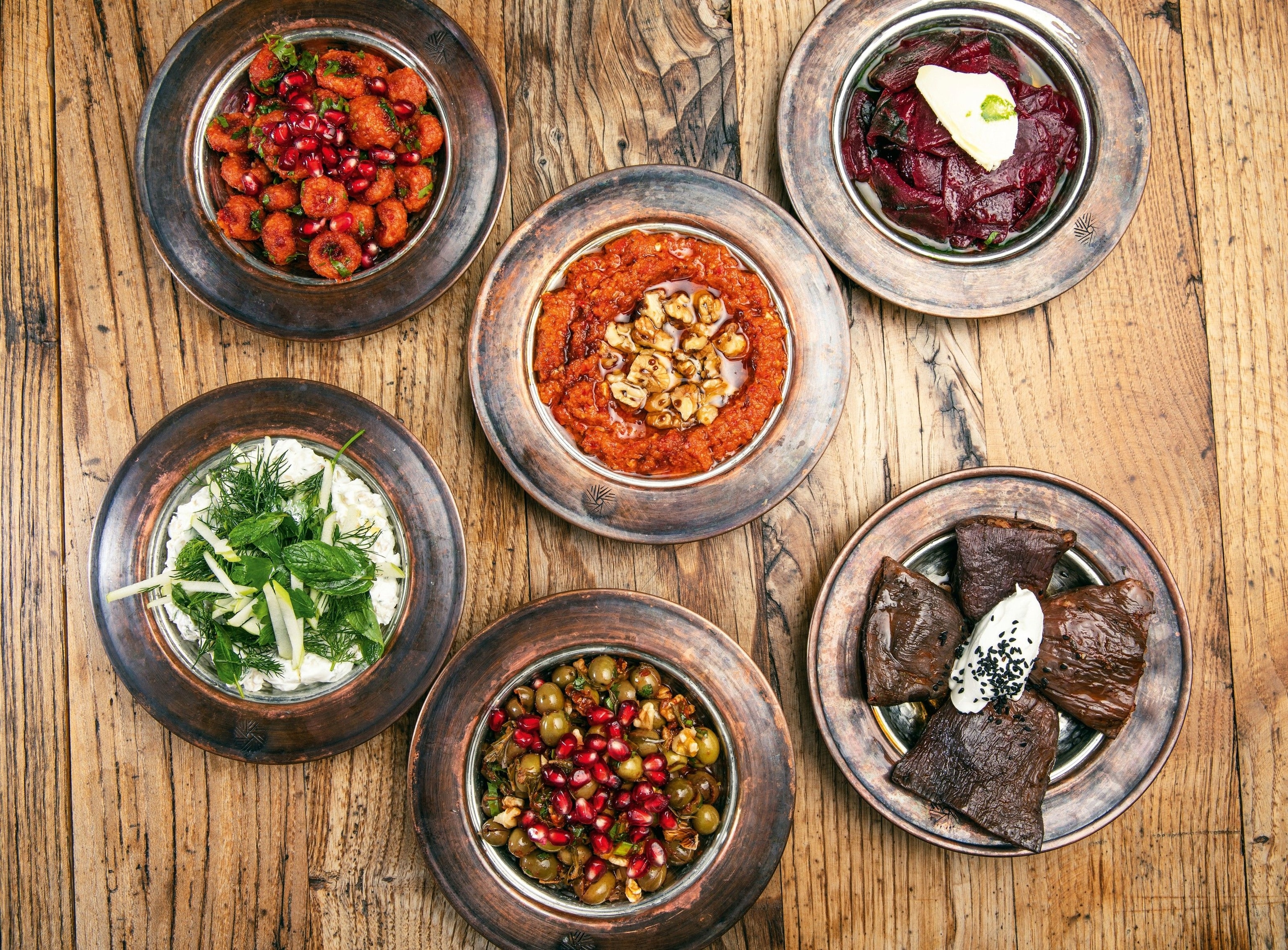
Day two: aerial and ecclesiastical wonders
Morning
Set your alarm early: the quintessential Cappadocia experience demands a pre-dawn start — hot air balloon rides are timed for gorgeous golden light and minimal wind. You’ll likely lift off before sunrise from the plain near the particularly phallic outcrops of Paşabağ, drifting alongside several dozen other balloons at altitudes of up to 2,600ft for jaw-dropping vistas. Back on terra firma, explore the Gorëme Open Air Museum, a cluster of over 30 rock-hewn churches, established by Byzantine Christians from the sixth century. The most sophisticated and vividly coloured frescoes adorn the 11th-century Karanlık Kilise (‘dark church’), Elmalı Kilise (‘apple church’) and, a short distance from the main site, the larger Tokalı Kilise (‘church of the buckle’). The latter’s distinctive blue paintings are currently undergoing expert restoration.
Afternoon
Until the demise of the Ottoman Empire, large numbers of Antiochian Greek Christians, (known locally as Rûm) lived in Cappadocia, often in ‘Greek’ villages. One such is Mustafapaşa, formerly known as Sinasos, today a peaceful little town off the main tourist trail. Head to the Old Greek House, whose vine-shaded courtyard is the perfect place to try Ottoman cuisine such as barbunya (beans cooked in a tomato sauce) and delectable baklava. Roam the quiet streets, lined with attractive old konakları (mansions) with ornately carved facades, and seek out the elaborately decorated doorway of the Ottoman caravanserai, now a college, and the grapevine motif surrounding the entrance to the 18th-century Church of Constantine and Helena. Work off those beans with a hike along the Balkan Valley to little-visited Pancarlık Church, to admire its frescoes in solitude.
Evening
Aktepe Hill is Cappadocia’s most popular sunset spot, commanding epic views across the folded russet rocks of Kızılcukur Vadisi (‘red valley’) that flame in the warm light of the golden hour. Arrive early or sharpen your elbows. Alternatively, detour to nearby Ortahisar, a sleepy settlement with its own rock fortress providing an impressive backdrop. Further south along the Balkan Valley lies Ibrahimpaşa, another little-visited village that’s home to one of the region’s most appealing restaurants. At Babayan Evi, the Koçdemir family prepare local favourites, some cooked in a large al fresco tandir, to serve in their part-cave home or on the canyon-view terrace. Kuzu kaburga (lamb rib) is a speciality. Replete, return to Uçhisar for a nightcap at newly opened Millocal, one of a host of restaurant-bars catering to sophisticated Istanbulite palates beneath the spotlit fortress.

Day three: the southern loop
An extra day in Cappadocia allows time to explore further afield, touring sites largely off the main trail — either under your own steam or as part of an organised tour
Kaymakli
Cappadocia’s subterranean labyrinths, initially excavated over 2,600 years ago and enlarged during the Byzantine era, served as a refuge from waves of Arab and Mongol invasions and Ottoman persecution. Of several underground cities open today, Kaymakli is arguably the most rewarding to visit. Delve five levels down to explore kitchens, stables, wineries and churches.
SoGanlı Valley
This valley is flanked by high cliffs into which are carved numerous pigeon houses. The small monastic cave complex at the end of the valley is the starting point for two walks — one above the poplar-lined river via Kubbelli Kilise (‘domed church’) to Soğanlı village (around 45 minutes), and a six-mile hike north through the gorge to Güzelöz.
Ihlara Gorge
This canyon snakes through the flat landscape beneath the bulk of Hasan Dağı Volcano, 44 miles south west of Uçhisar. Its basalt walls are pocked with cave churches, although the real joy is simply ambling along the peaceful path alongside the Melendiz River. Tackle the 10-mile stretch between Ihlara village and Selime (around six hours), or the central portion between the main entrance above Sümbüllü Church and Belisırma (about 1.5 hours). Pause to admire Kirkdamaltı Kilise (St George’s Church), and its 19th-century Greek graffiti.
Sultanhanı
The largest han (caravanserai) in Anatolia, west of Aksaray, makes an interesting detour from Ihlara. Founded in the 13th century, it was a key stop on the network of havens built under the Seljuk Empire to serve trading caravans. Enter through the ornately carved doorway and explore a courtyard surrounded by chambers in which merchants stabled their animals and stored goods.
Sobesos
Discovered in 2002 on the outskirts of Şahinefendi, 16 miles south east of Uçhisar, Sobesos is the only ancient Roman city so far found in Cappadocia. Having been partially excavated, visitors can wander around a bath complex, an assembly house, a graveyard and a basilica with some fine mosaics.
Keşlik Monastery
South of Mustafapaşa, this compact and atmospheric monastic complex bored into a cluster of pointed outcrops is home to a kitchen, refectory, winepress and school, all set within a lush orchard.
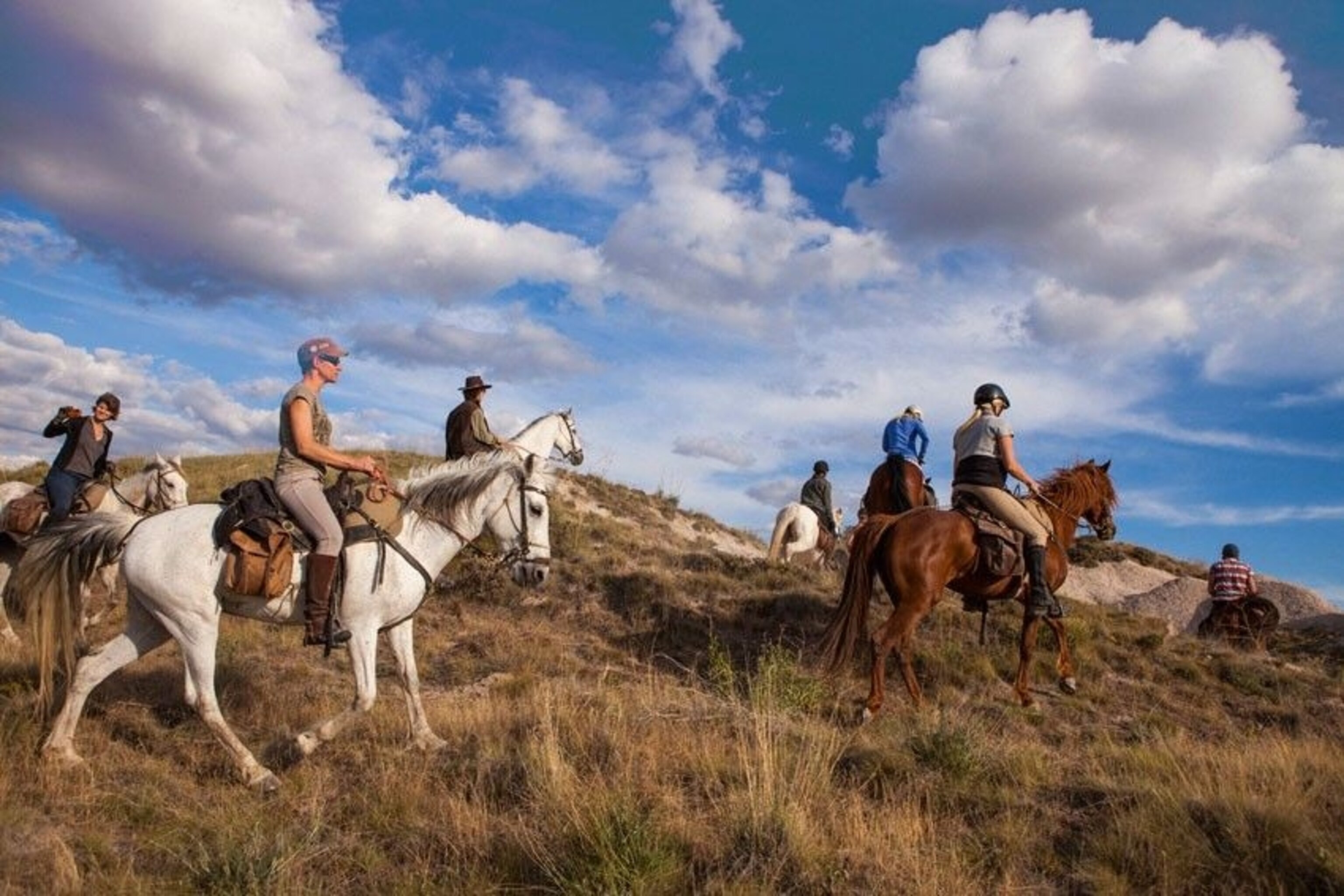
Top four outdoor activities in Cappadocia
1. Trekking
Trails between the central towns are easy to follow, but a guide can reveal tucked-away churches and paths. Gorëme-based Middle Earth Travel runs day walks and longer trekking tours around Cappadocia and farther afield, as well as hosting numerous other activities.
2. Horse-riding
Several stables offer riding experiences among the rock outcrops and along valley paths. Tours with The Dalton Brothers Travel range from one-hour trots along Kılıclar Vadisi or Güllüdere Vadisi to full-day rides. French guide Nicolas Guillo, of Kapadokya Ranch, offers week-long tours.
3. Skiing
There’s good skiing to be had in Cappadocia from December to April, when Mount Erciyes is snow-clad. Its 34 miles of pistes (with 14 lifts) are best for beginners and intermediate skiers (12 miles of blue runs, 14 miles red, eight miles black).
4. Cycling
Dirt trails through volcanic-rock valleys offer diverse options for biking, from single-track mountain-bike epics to more moderate adventure routes and road-cycling circuits around the historic sites. Biking in Turkey runs guided tours of varying durations.
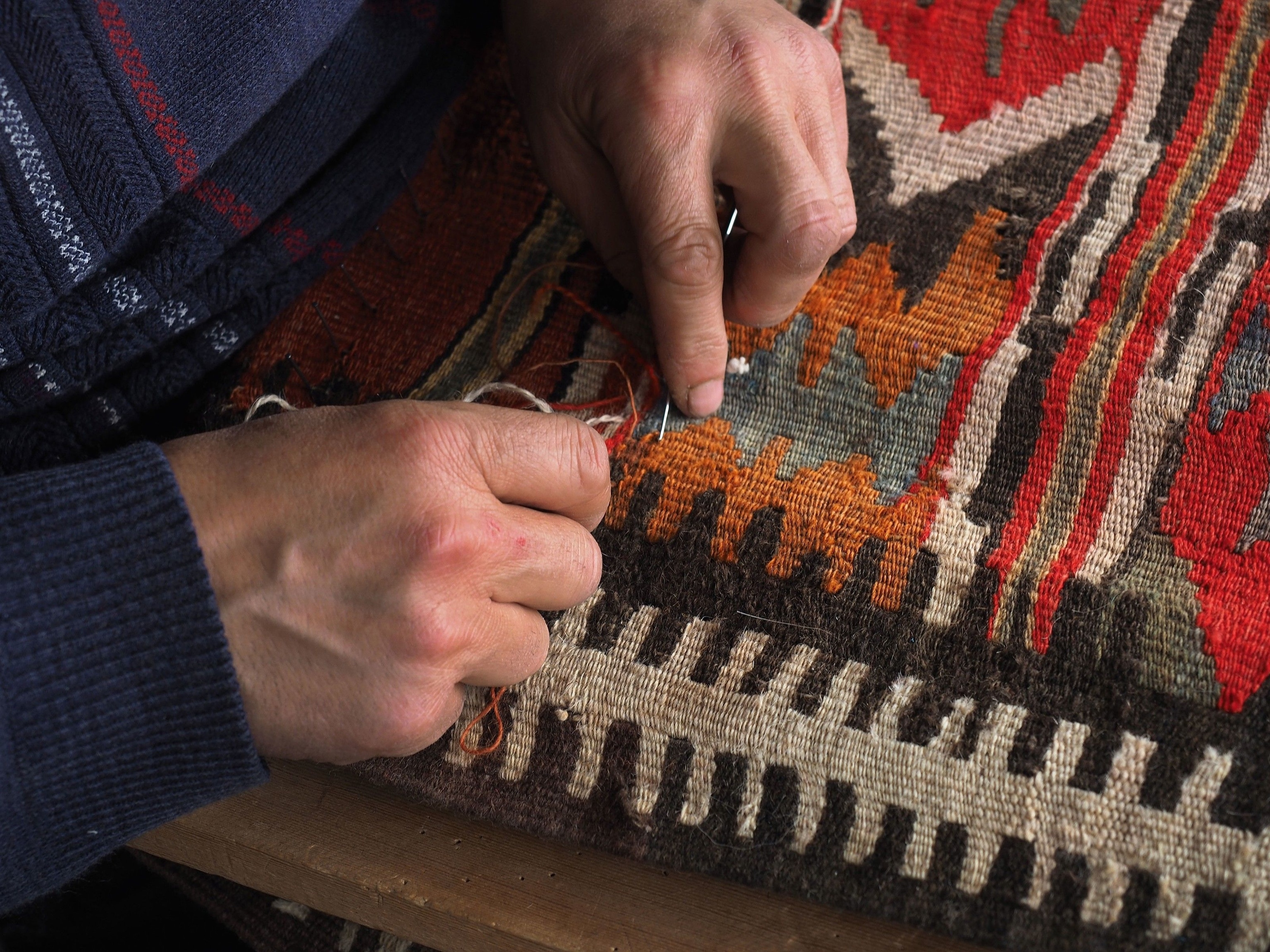
Top three souvenirs to buy
1. Kilims & rugs
The carpets in Cappadocia are truly kaleidoscopic; the more picturesque shops such as Sultan Carpets, in Gorëme, have become popular locations for photo shoots. Visit Galerie Faruk, in Uçhisar, to browse for affordable modern kilimler (tapestry-woven carpets) and vintage rugs, camel headpieces, farming implements and the embroidered wedding tunics of nomadic peoples.
2. Ceramics
The rich red clay of Avanos has been used to make pottery for over two millennia; today, the town’s ceramics workshops offer the chance to try your hand (and foot) at the wheel. Güray Müze incorporates a museum with exhibits dating back to the Hittite era, plus a workshop and shop.
3. Lace
The decorative art commonly known as ‘Turkish lace’ has traditionally been used to adorn headdresses and scarves, but at Minerva Handicrafts, in central Gorëme, you’ll find gorgeous and unusual floral necklaces created through a kind of macramé technique, as well as bags and more typical souvenirs.
How to do it
Turkish Airlines flies daily from various London and UK regional airports to Nevsehir Kapadokya,
via Istanbul, with return fares from £266.
Abercrombie & Kent offers a four-day Cappadocia trip from £1,850, including flights, B&B accommodation at Argos in Cappadocia, transfers, guide and a hot air balloon experience.
More information:
Museum Pass Cappadocia, 175 lira (£20) for three days.
Royal Balloons
Turkish Culture & Information Office
Published in the Sept/Oct 2020 issue of National Geographic Traveller (UK)
Subscribe to our newsletter and follow us on social media:
Facebook | Instagram | Twitter
